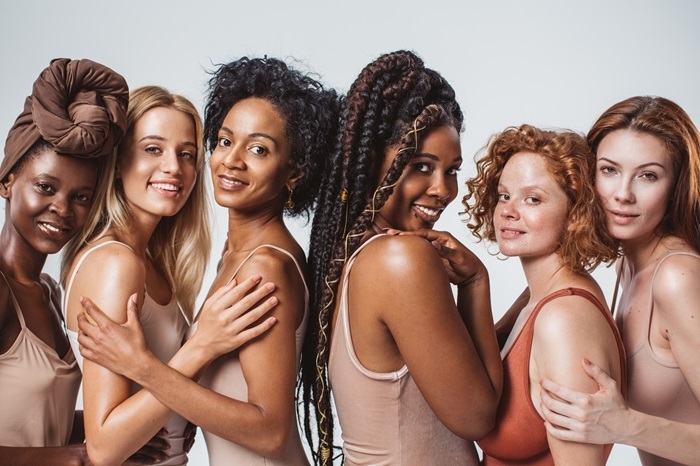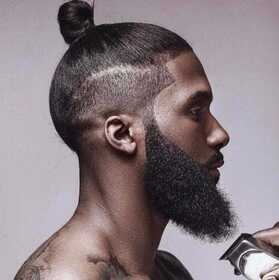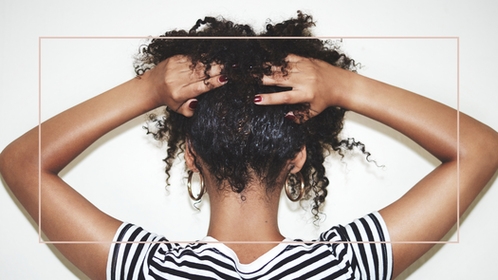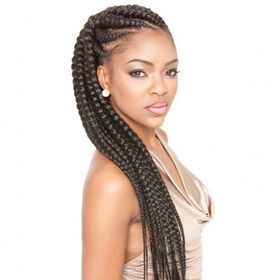
Natural hair enthusiasts understand that hair comes in a variety of textures, from fine to coarse, and that understanding the different grades of hair is important when it comes to caring for and styling natural hair. The grades of hair are typically categorized on a scale from 1A to 4C, with each grade representing a specific texture and curl pattern. In this article, we will delve deeper into the different grades of hair, what they mean, and how to care for each one.
Grade 1A: Straight and Fine
Grade 1A hair is straight and fine, with a silky texture. This type of hair tends to be very thin and often lacks body and volume. It is important to use products that will not weigh down the hair or make it look greasy. Those with 1A hair may want to consider using volumizing shampoos and conditioners to add body to their hair. Additionally, heat styling tools can be used to add volume and texture to the hair.
Grade 1B: Straight and Medium
Grade 1B hair is straight, but with a slightly thicker texture than 1A hair. This type of hair is still relatively thin, but it has more body and volume. Like 1A hair, those with 1B hair should avoid using heavy products that will weigh the hair down. Additionally, they can use heat styling tools to add volume and texture to the hair.
Grade 1C: Straight and Coarse
Grade 1C hair is straight, but with a coarser texture than 1A and 1B hair. This type of hair tends to be thicker and fuller, with more body and volume. Those with 1C hair may need to use heavier products, such as oils and creams, to keep their hair moisturized and prevent breakage. Heat styling tools can also be used to add texture and volume to the hair.
Grade 2A: Wavy and Fine
Grade 2A hair is wavy and fine, with a texture that falls somewhere between straight and curly. This type of hair tends to be relatively thin, but it has more body and volume than straight hair. Those with 2A hair should use lightweight products that will not weigh down their hair, but will still provide moisture and nourishment.
Grade 2B: Wavy and Medium
Grade 2B hair is wavy, but with a slightly thicker texture than 2A hair. This type of hair has more body and volume than 2A hair, and it may have a slight curl or wave pattern. Those with 2B hair should use products that will provide moisture and nourishment without weighing down their hair. They may also want to consider using a diffuser when blow drying their hair to enhance their natural curl pattern.
Grade 2C: Wavy and Coarse
Grade 2C hair is wavy, but with a coarser texture than 2A and 2B hair. This type of hair tends to be thicker and fuller, with more body and volume. Those with 2C hair may need to use heavier products, such as oils and creams, to keep their hair moisturized and prevent breakage. They may also want to consider using a diffuser when blow drying their hair to enhance their natural curl pattern.
Grade 3A: Curly and Loose
Grade 3A hair is curly and loose, with a texture that falls somewhere between wavy and curly. This type of hair has more body and volume than 2C hair, and it may have a well-defined curl pattern. Those with 3A hair should use products that will provide moisture and nourishment, as curly hair tends to be more prone to dryness and breakage.
Grade 3B: Curly and Tight
Grade 3B hair is curly and tight, with a well-defined curl pattern that is more tightly coiled than 3A hair. This type of hair tends to be thicker and fuller than 3A hair, and it may be more prone to frizz. Those with 3B hair should use products that will provide moisture and nourishment, as well as anti-frizz products to help control frizz.
Grade 3C: Curly and Coarse
Grade 3C hair is curly, but with a coarser texture than 3A and 3B hair. This type of hair tends to be very dense, with tightly coiled curls that may be more prone to tangles and breakage. Those with 3C hair should use heavier products, such as oils and creams, to keep their hair moisturized and prevent breakage. They may also want to consider using a wide-toothed comb or detangling brush to help prevent tangles.
Grade 4A: Kinky and Soft
Grade 4A hair is kinky and soft, with a well-defined curl pattern that is tightly coiled. This type of hair tends to be very dense, with a lot of volume. Those with 4A hair should use products that will provide moisture and nourishment, as well as products that will help define their curl pattern.
Grade 4B: Kinky and Coarse
Grade 4B hair is kinky, but with a coarser texture than 4A hair. This type of hair tends to be very dense, with a tight curl pattern that may be more difficult to define. Those with 4B hair should use heavier products, such as oils and creams, to keep their hair moisturized and prevent breakage. They may also want to consider using a wide-toothed comb or detangling brush to help prevent tangles.
Grade 4C: Kinky and Very Coarse
Grade 4C hair is the most tightly coiled and coarser type of natural hair. This type of hair tends to be very dense and tightly coiled, with a zig-zag or "Z" pattern. Those with 4C hair should use heavy products, such as oils and butters, to keep their hair moisturized and prevent breakage. They may also want to consider using protective styles, such as braids or twists, to help protect their hair from damage.
In conclusion, understanding the different grades of hair is important when it comes to caring for and styling natural hair. By knowing your hair's grade, you can choose the right products and styling techniques that will help keep your hair healthy, moisturized, and looking its best. Whether your hair is straight and fine or kinky and very coarse, there is a natural hair care routine that is right for you.






Leave Comment Below
0 Comment(s)